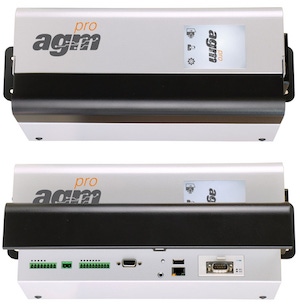Rinco Ultrasonics introduces AGM Pro ultrasonic generator for automated welding
The AGM Pro ultrasonic generator has smaller dimensions and is almost 50% lighter than the legacy system.
February 14, 2018

 Rinco Ultrasonics USA (Danbury, CT), a manufacturer of ultrasonic welding equipment, will launch its new AGM Pro ultrasonic generator at NPE2018. The new ultrasonic generator, which is designed to be built into automation lines and special-purpose machines for controlling ultrasonic components, will be on display at booth W5373.
Rinco Ultrasonics USA (Danbury, CT), a manufacturer of ultrasonic welding equipment, will launch its new AGM Pro ultrasonic generator at NPE2018. The new ultrasonic generator, which is designed to be built into automation lines and special-purpose machines for controlling ultrasonic components, will be on display at booth W5373.
The digital, Industry 4.0-capable AGM Pro is an upgraded version of Rinco’s current AGM ultrasonic generator and is suited for semi-automated and automated applications in the automotive, packaging and food cutting industries, said the company’s information.
“We took years of collected data and built a new version of the AGM from the ground up that will revolutionize the way industry integrates ultrasonics into its assembly machinery,” said Gordon Hull, U.S. Managing Director of Rinco Ultrasonics.
The AGM Pro has smaller dimensions and is almost 50% lighter than the legacy device. Its narrow design is compatible with electrical cabinets, where depth and height dimensions are most restricted. It is also equipped with a communications module for numerous industrial protocols, such as Ethernet/IP, Profibus, Profinet, EtherCAT, DeviceNet and others, said Rinco.
The AGM Pro has a soft-start and soft-stop function to ensure that complex sonotrodes can be gently ramped up and down. There are a total of six selectable welding modes: Time, energy, time or energy, time and energy, contact cut-off and continuous. The AGM Pro digitally acquires all parameters, including error messages during operation. This also allows for increased cycle times that improve productivity.
The software arranges errors into generator, oscillator system and limits faults for ease in troubleshooting. For quality control, numerous limit values can be set that trigger a warning or stop function. Once the welding operation is complete, the operator can use the web application to access, analyze and document all important results and welding parameters.
About the Author(s)
You May Also Like




